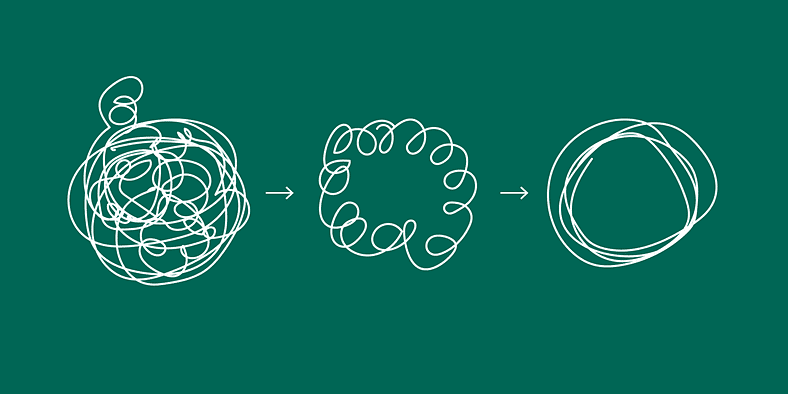In today’s data-driven world, information is abundant, but understanding and making sense of it can be a daunting task. With the exponential growth of data, businesses, researchers, and individuals face the challenge of deciphering complex information and extracting valuable insights. Data visualization, a powerful tool that translates intricate data sets into visual stories, has emerged as a key solution to tackle this challenge.
“Make all visual distinctions as subtle as possible, but still clear and effective.”
— Edward Tufte
What is Data Visualization?
Data visualization is the graphical representation of information and data. It involves using visual elements like charts, graphs, and maps to present data patterns, trends, and relationships in a visually appealing and easy-to-understand format. Unlike traditional data tables or text-based reports, data visualization enables users to grasp vast amounts of information quickly and identify meaningful patterns, outliers, and correlations with just a glance.
The Power of Visual Perception:
Human beings are highly visual creatures, and our brains are wired to process visual information more efficiently than textual or numerical data. Research indicates that nearly 90% of the information transmitted to the brain is visual. Visualizations tap into this inherent cognitive ability, enabling us to process and retain complex data more effectively. By leveraging colors, shapes, and patterns, data visualizations facilitate faster and deeper comprehension of information.
Simplifying Complexity:
Data is often complex, and it can be challenging to communicate intricate details effectively. Data visualization simplifies this complexity by presenting information in a visually concise manner. For example, a large dataset with thousands of data points may be difficult to interpret at first glance. However, by representing the same data in a line chart or a bar graph, trends and patterns become apparent, making it easier to derive insights and actionable conclusions.

Enhancing Decision-making:
In various fields such as business, healthcare, finance, and research, decisions play a crucial role in driving success. Data visualization plays a vital role in enhancing decision-making processes. By transforming raw data into visual stories, decision-makers can identify critical trends, spot opportunities, and address challenges more efficiently. Interactive visualizations further empower users to drill down into specific data points and explore different scenarios, enabling informed and confident decision-making.
Telling Engaging Stories:
Humans have an innate love for stories, and data visualization allows us to tell captivating narratives with data. Instead of presenting dry facts and figures, visualizations create engaging stories that captivate audiences. For instance, consider a data visualization showing the decline of a species’ population over time. This visualization can evoke emotions, raise awareness, and mobilize efforts for conservation. Through compelling storytelling, data visualization has the power to influence opinions, change behaviors, and shape the world positively.
Increasing Data Accessibility:
Not everyone possesses the expertise to interpret raw data or complex statistical analyses. Data visualization bridges this gap by making data accessible to a broader audience. Infographics, for example, combine data visualizations with concise text, making them ideal for sharing information through social media, websites, and presentations. By making data more approachable, data visualization fosters a data-driven culture and encourages a broader understanding of complex topics.
Tools and Technologies:
Advancements in technology have propelled data visualization to new heights. Today, a wide array of data visualization tools and software are available, catering to diverse needs and skill levels. From simple chart-building tools for beginners to advanced programming languages like Python and R for data scientists, there is a tool for every user. Moreover, interactive visualization tools have gained popularity, allowing users to engage with data actively and customize their visualizations for specific purposes.

Challenges in Data Visualization:
While data visualization is a powerful means of communication, it comes with its own set of challenges. Misleading visualizations, either intentional or unintentional, can distort the truth and lead to misinterpretations. Designing visualizations that accurately represent data without bias requires careful consideration and ethical responsibility. Additionally, choosing the appropriate visualization type and ensuring data accuracy are crucial steps in the visualization process.
Data visualization is a transformative force that empowers individuals and organizations to make sense of complex information and uncover hidden insights. By leveraging the power of visual perception, data visualization simplifies complexity, enhances decision-making, and communicates engaging stories. As we continue to navigate the data-driven landscape, embracing data visualization as an essential tool will unlock new opportunities for innovation, understanding, and progress across various domains. Whether you are a business analyst, a researcher, or a curious individual, data visualization holds the key to unlocking the hidden stories within data and unleashing its full potential.
For more blogs related to design: https://www.dotsod.in/blog/
Follow DOT School of Design in Facebook, Instagram, LinkedIn and YouTube

